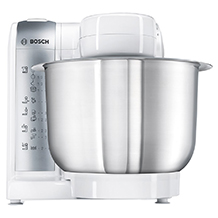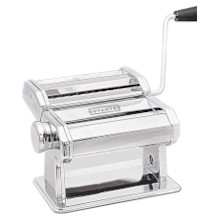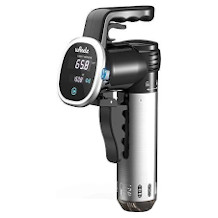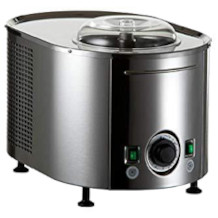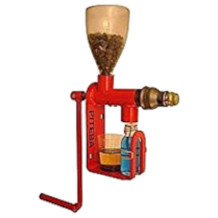Microwave purchasing advice: how to choose the right product
- What You Need to Know
- The microwave oven is a practical kitchen aid for defrosting frozen food and heating food and drinks quickly. Some models have additional functions such as cooking, grilling and baking.
- Compared to ovens, microwaves save energy and work faster. They also take up less space and are therefore well suited for small flats.
- While conventional microwave ovens always work at their maximum power and take breaks at certain intervals depending on the power level selected, modern appliances with inverter technology make it possible to adjust the power precisely.
- The most important criteria for buying a microwave oven include the range of functions, the capacity, the power, the operation and the dimensions.
How does a microwave work and what advantages does it offer?
Like the coffee maker, the toaster and the kettle, the microwave is taken for granted in many kitchens. According to the Federal Statistical Office, almost three quarters of German private households own such an appliance in 2018. Microwave ovens can also be found in many office kitchens. They make food preparation easier and faster and thus fit very well into our time, when everything has to be done as quickly as possible and no one has much time left over for the household.
Heat from vibrating water molecules
The microwave oven is known as a practical kitchen aid for quickly heating up food. Less well known, however, is how it works. Unlike traditional ovens, microwave ovens do not work with heating rods and heat. As the name suggests, the principle is based instead on low-frequency electromagnetic waves. These waves cause the water molecules contained in all food to rotate and increase their kinetic energy. This increases the temperature of the water molecules and the food becomes warm.
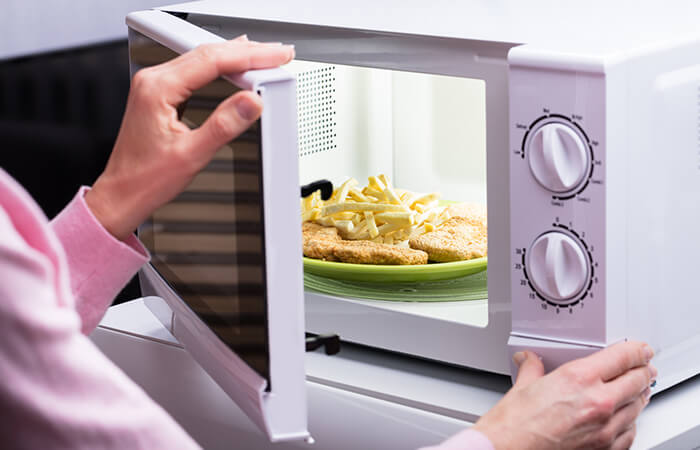
The prejudices against microwaves
The way microwave ovens work is not met with enthusiasm everywhere, but has to contend with some prejudices. To this day, there is a widespread fear that dangerous radiation could escape from the appliances, which is harmful to people. The same applies to the fear that the microwaves could change the structure of the food heated with them in such a way that it could be harmful to health in the long term.
How do microwaves affect the human body?
Microwaves cause water molecules to rotate and thus heat liquids. They do this not only with food, but also with the human body. So the fear of these waves is quite justified, because they are dangerous for biological cells. However, the microwave ovens available on the market are well shielded by their housing.
With intact appliances, only small doses of the waves, the so-called leakage radiation, are emitted in the immediate vicinity of the microwave oven. The Federal Office for Radiation Protection carries out strict tests to ensure that this is not too high. The emission limit at a distance of five centimetres from the microwave oven is five milliwatts per square centimetre. So far, the tests have never found that the specified limit has been exceeded.
Do microwaves affect the nutritional content of food?
Many studies have shown that heating food in a microwave oven does not affect its nutritional content when used correctly. The important thing, as with stovetop heating, is that the food is cooked gently so that it retains its nutrients. Residues from the microwaves do not remain in the food.
Which dishes should be prepared with care?
Users should be careful when preparing baby food and delicate foods such as eggs and poultry. Since the temperature is not distributed evenly throughout the food when it is heated in the microwave, there is a risk that pathogens such as salmonella or listeria will not be reliably killed.
Fast, energy-saving and versatile
Microwave ovens are mainly used for heating small portions, such as leftovers from the previous day. They are not only more energy-efficient, but also much faster than ovens and hobs. Preheating, which takes a long time with some ovens, is completely unnecessary with microwaves. Another advantage over the oven is that microwaves are much more compact and can therefore easily fit into smaller kitchens.
Microwaves are also ideal for defrosting frozen food. Frozen food is defrosted within a few minutes. Some modern models also have functions for grilling and baking, making them so versatile that an oven is hardly necessary. In some cases, steam cooking is also included in the range of functions. Such models are able to heat food so gently that most of the nutrients and vitamins are preserved.
Advantages of a microwave
- More energy-saving than the oven
- Space-saving
- Quick heating of small portions
- Gentle defrosting of frozen food
- Models available with baking, cooking and grilling functions
Important buying criteria: Here’s what you should look out for
The market offers a wide range of different microwave models. Some important criteria that consumers should consider when making a purchase decision are presented below.
Capacity: How much can the microwave hold?
The capacity of the microwave oven, also known as the cooking chamber volume, is particularly important. The most common appliances have a capacity of between 15 and 30 litres. The capacity that consumers need depends on their usage preferences and the size of the portions that are to be heated with the microwave. For singles or couples who want to use the kitchen aid to heat up or defrost food, smaller models with a cooking chamber volume of up to 20 litres are usually sufficient. If, on the other hand, you are buying a microwave with hot-air or grill function as a substitute for an oven, for example to bake pizzas, you should choose a larger appliance with a capacity of 20 litres or more. The same applies to households of three or more people who want to use the kitchen aid to heat or prepare their meals together.
Larger models with a capacity of up to 50 litres can also be found in some shops. However, these are mainly used in the catering industry. These sizes are not usually necessary for private use.
The dimensions
The dimensions of a microwave oven vary depending on its capacity. The following table shows the range within which they lie:
| Minimum | Maximum | |
| Width | 37 cm | 60 cm |
| Height | 22 cm | 57 cm |
| Depth | 26 cm | 57 cm |
If you opt for a free-standing model, you should always allow enough space on your worktop. The microwave should be placed at a certain distance from walls, cupboards and other kitchen appliances to allow sufficient ventilation. Behind the appliance and on both sides, a distance of around ten centimetres is recommended. Above the appliance, there should be 20 centimetres.
The power: How many watts are necessary?
Depending on the model, the power, which is specified in watts, can also vary. Basically, the larger the cooking chamber volume and the greater the range of functions, the more power is needed so that you don’t have to wait too long for your food. For small models that are limited to basic functions, a power of 700 to 800 watts is sufficient. On the other hand, appliances with a larger cooking chamber (around 20 litres or more) that can handle several preparation programmes such as heating, defrosting, grilling and steam cooking need a power of 1,400 watts or more. In terms of power, consumers should note that microwaves with a higher power can heat dishes in a shorter time, but they also require more energy. So it is important to weigh up whether saving time or electricity is a higher priority.
In addition, a microwave should have several power levels so that users can adjust the power and, for example, defrost delicate foods such as fish with a lower wattage. An inverter microwave is particularly suitable for this purpose, as it actually regulates the wattage instead of operating in intermittent mode.
Operation
Operating the microwave oven should be as intuitive and convenient as possible. Basically, two types of operation can be distinguished:
Models with mechanical control panel

Mechanical control panels are often found on very simple units whose range of functions is limited to the basic functions. They usually consist of two rotary controls. Users use one to set the cooking time and the other to set the power. Depending on the model, users set the cooking time in ten-second or minute increments.
Models with digital control panel

More and also more precise setting options are found on digital control panels. They provide microwaves with a wider range of functions. Such control panels usually consist of an LC display and various sensor buttons with which users can select the desired programme and, if necessary, adjust individual parameters such as power and cooking time very precisely. Operation is therefore much more complex than with models with a mechanical control panel, but also offers more options.
As much convenience as possible
On some appliances, the knobs or buttons are retractable. This makes cleaning the front easier. Some digital control panels also offer the option of saving frequently used settings. Another convenient feature is an automatic timer. It makes it possible to enter a desired time at which the microwave should start a programme. For example, users can put their food in the microwave oven in the morning before going to work, select the desired programme and start time, and when they get home they can look forward to seeing the food already prepared. Microwaves that can handle different types of preparation often also allow these to be combined, also known as serialisation. For example, users can set the appliance to heat the food first and then brown it with the grill function.
The material of the outer casing
The inner microwave housing must always be made of metal to hold and reflect the microwaves in the cooking chamber. The outer skin, on the other hand, is usually made of one or two of the following materials:
- Plastic
- Glass
- Stainless steel
Inexpensive appliances are often encased in plastic. They are characterised by a sturdy, lightweight and easy-to-clean casing. However, models made of plastic are somewhat less durable than those made of stainless steel and tend to discolour over time. On the other hand, fingerprints are less easily visible.
Models in the higher price segments (from around 100 euros) usually have a stainless steel housing and sometimes a glass front. This gives them a high-quality and modern look. In addition, stainless steel and glass are more durable and less susceptible to material discolouration than plastic. On the other hand, stainless steel appliances require more care because they are more sensitive to fingerprints. Users have to wipe and polish the surface more often. Some high-quality stainless steel models are equipped with a special coating that reduces visible fingerprints and thus the cleaning effort.
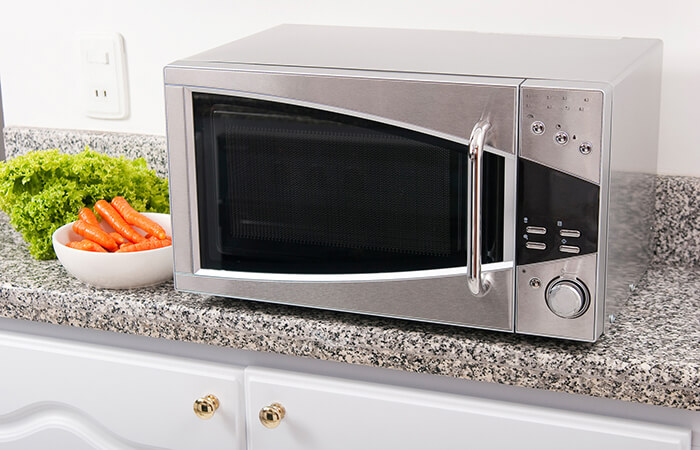
From defrosting to baking: What functions does a microwave have?
The microwaves on the market differ not only in their design but also in their range of functions. While inexpensive appliances (around 50 to 100 euros) are usually only equipped with the basic functions, microwaves from higher price segments come with various additional features.
The basic equipment: Various power levels in interval mode
The basic equipment of a microwave oven includes heating at different power levels, usually five or six. Popular appliances operate in interval mode. This means that they always operate at the maximum power level specified by the appliance’s electrical rating. If users select a lower power level, the actual power is not reduced. Instead, the microwave takes pauses at certain intervals depending on the level. For example, if a microwave has a rated power of 800 watts and users set a power level of 400 watts, the appliance will emit 800 watts of radiant power for five seconds, pause for five seconds and then start again.
The special case: inverter microwaves
Modern microwaves in the higher price segment (from about 150 euros upwards) often do not use the interval method, but instead make use of so-called inverter technology. This makes it possible, with a special switching power supply, to actually adjust the power and work with lower wattages if necessary. This has the advantage that more delicate foods such as fish are defrosted and cooked more gently. Heating takes place more evenly. In addition, inverter microwaves are more energy-efficient than traditional models.
Pro points
- Gentler defrosting and cooking
- Very energy efficient
- More even heating
Drawbacks
- Higher price
Practical additional functions
High-quality models are often equipped with practical additional features for special types of preparation.
The defrost function

In principle, defrosting frozen food works with any microwave. Users should select a low power setting so that the food is not cooked and all the nutrients are retained. For this, 180 to 240 watts is recommended. It is easier and safer to use an automatic defrost programme, which some models have. Users enter the weight and type of food to be defrosted on the control panel. The appliance then automatically adjusts the duration of the process and the necessary power or interval.
The hot air and circulating air functions

The hot air and circulating air functions are mainly known from the oven and were reserved for it for a long time. Nowadays, however, some microwave ovens are also equipped with one or both functions and thus become a small oven. In both cooking processes, hot air circulates in the cooking chamber, which results in food being cooked and browned evenly on all sides. This requires high temperatures of at least 200 degrees Celsius. To be able to generate these temperatures, the appliances work with heating rods in addition to the microwave principle. With a hot-air or circulating-air function, also known as a baking function, users can bake pizzas, bread or casseroles in their microwave.
The grill function
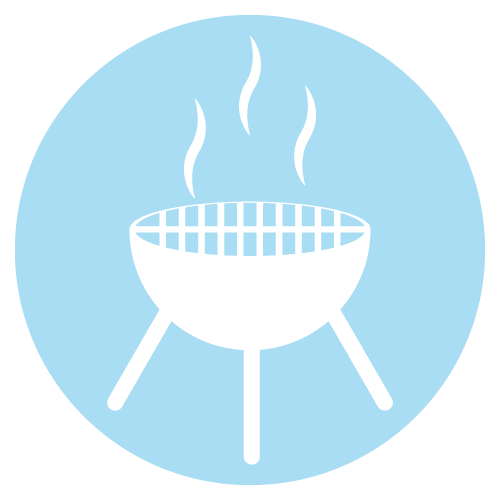
If you not only want to defrost or heat your dishes in the microwave, but also want them to have a crispy texture and roasted aromas, you should choose an appliance with a grill function. Some inexpensive combination appliances starting at around 100 euros already have this feature. They have either a quartz or an infrared grill integrated. With the former, the grill elements are located in the top of the cooking chamber. A combination of quartz grill and turntable produces even browning and is therefore well suited for casseroles. While the quartz grill only browns the food from above, the infrared grill irradiates it from all sides and has a more even effect. The latter is well suited for grilling poultry, for example.
The steam cooking function

With steam cooking, food is heated particularly gently with steam. The inner structure and appearance of the food are not changed. In addition, all vitamins, nutrients and flavours are preserved. Microwave ovens with steam cooking function have a water tank. For steam cooking, the appliance heats the water to produce pure steam, which is used to heat the food. Depending on the model, temperatures of 30 to 100 degrees Celsius can be set for steam cooking.
The keep-warm function

Some models have a keep-warm function in addition to the various preparation programmes. With this function, the food continues to be heated after preparation. However, the cooking process stops so that they do not dry out or burn. The function usually starts automatically when the microwave door remains closed at the end of cooking. Depending on the model, food can be kept warm for 15 to 90 minutes.
The self-cleaning function

Another very practical feature of some high-quality microwaves is the self-cleaning function. This saves users the time-consuming and laborious cleaning that is regularly necessary. For self-cleaning, the appliance generates steam inside the cooking chamber for about ten to fifteen minutes. The water for this comes either from an integrated water tank, which is also used for steam cooking, or from a container that the user must place in the centre of the cooking chamber. The steam ensures that all dirt is removed from the inside walls of the microwave oven. After the steam process, the user simply wipes the inside of the microwave with a cloth.
What are the different types of appliance?
Microwaves are available in different variants. On the one hand, the kitchen appliances differ in terms of their design and, on the other, in terms of the microwave distribution system used.
The type of construction: freestanding, built-in or under-cabinet
In terms of design, microwaves can be divided into three different categories:
The freestanding microwave
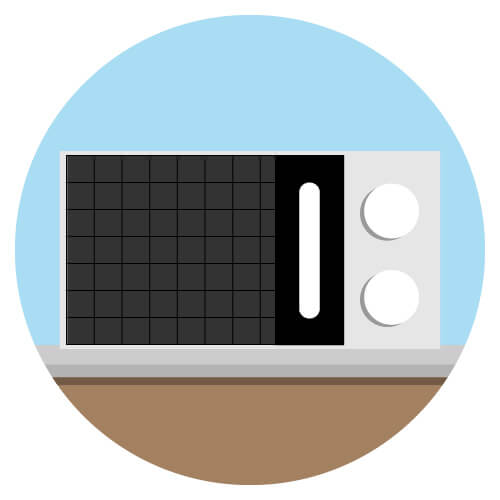
The most common type is the freestanding microwave. Users simply place it in a suitable location, usually on the kitchen worktop, and connect it to the mains. When placing it, users should keep a distance of around ten centimetres from the surrounding walls or cabinets to allow sufficient ventilation. Freestanding microwaves offer the advantage that they can be placed flexibly and are easy to replace in the event of a defect.
The built-in microwave
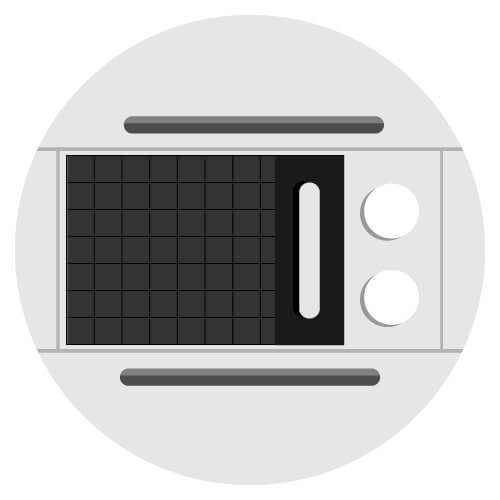
Unlike free-standing appliances, the built-in microwave does not require any space on the worktop. It fits into a designated space in the fitted kitchen. This makes the built-in microwave less flexible than a freestanding appliance. Consumers have to take it into account when planning the kitchen and cannot simply move it later. In addition, a specialist is usually required for installation, and a defective appliance is not so easy to replace. On the other hand, the microwave oven blends very harmoniously into the kitchen. It is suitable for anyone who is planning a new kitchen.
The undercounter microwave
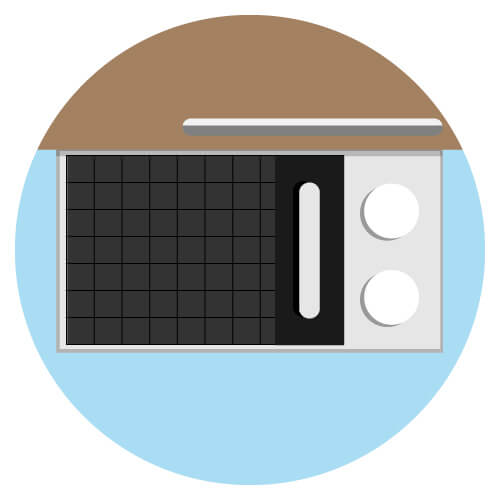
Undercounter microwaves are a compromise between a freestanding appliance and a built-in model. They are installed under a wall cabinet in the kitchen. Such models have at least four holes in the top of the appliance so that they can be securely screwed to the kitchen cabinet. They can therefore be integrated into kitchens without a designated installation point and at the same time do not take up any space on the worktop. However, they also blend less harmoniously into the kitchen than a built-in model and are less flexible than free-standing appliances. When installing them, users must ensure that the load-bearing capacity of the cabinet is sufficient for the weight of the microwave, that there is a power socket nearby and that the ventilation for the appliance is freely accessible. Undercounter microwaves are a good solution for consumers who do not have a built-in location or enough countertop space in their kitchen.
The different microwave distribution systems
In addition to the aforementioned construction methods, microwave ovens also differ in the way they distribute the electromagnetic waves that give them their name inside them, the cooking chamber. It is important that the waves are distributed homogeneously so that they heat the food and drinks evenly.
The turntable
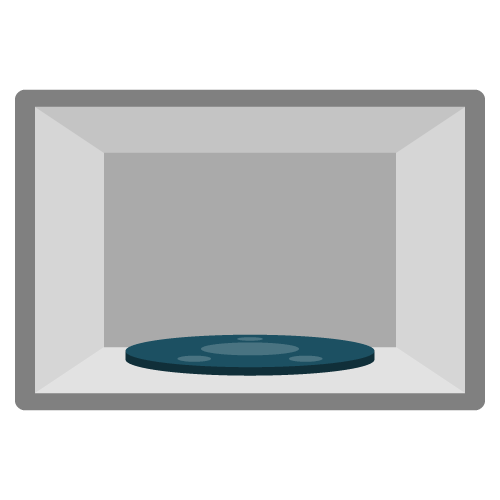
The classic microwave distribution system is the turntable. It lies loosely on a rotating mechanism in the middle of the microwave base. The food to be heated is placed on it in a suitable container. During operation, the plate rotates and with it the food on it.
The reflector wing
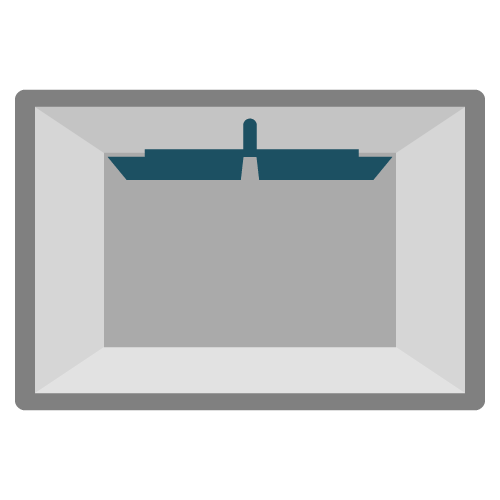
An alternative to the rotary plate is the so-called reflector blade, also called a wave stirrer. It is located on the upper inside of the microwave oven and rotates during operation. It reflects the microwaves that hit it and causes them to be deflected by the cooking chamber walls in constantly changing directions.
The rotating antenna
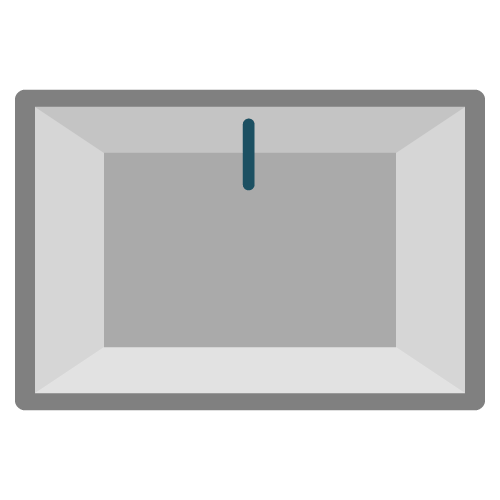
The so-called rotating antenna works in a similar way to the reflector blade. It is located either above or below the cooking chamber or protrudes into the interior of the oven. As it rotates, it distributes the microwaves homogeneously in the cooking chamber.
The reflector point
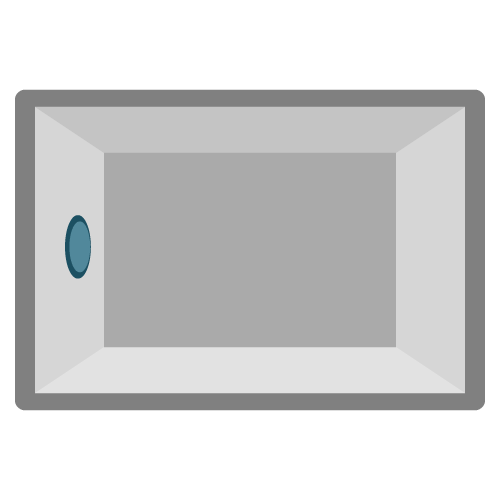
Another system for distributing the microwaves in the cooking chamber is the reflector point. It is located on the side wall of the cooking chamber, opposite the point where the microwaves are fed in.
Several distribution systems combined
True to the motto “double is better”, some appliances have two distribution systems at the same time, such as the reflector wing and the turntable or the reflector point and the turntable. On the one hand, this ensures even better distribution of the microwaves in the cooking chamber, and on the other, it gives the user the option of switching off the turntable as required. This is practical, for example, if the food to be heated is somewhat larger and is difficult or impossible to fit on the turntable.
Using the microwave safely
Microwaves are not without controversy. These practical kitchen helpers sometimes have a reputation for being dangerous. It is quite easy to refute the prejudices against microwaves. After all, there is no serious evidence that the microwaves used with a commercially available, intact model have any harmful effect. Nevertheless, it is important to read and follow the safety instructions in the user manual.
Tips for more safety
Like other kitchen appliances, many microwave ovens are equipped with features to make them safer to use. These include the following:
Automatic switch-off

To prevent microwaves from escaping the appliance, the appliances switch off automatically when the door is opened. In addition, microwave ovens are equipped with a thermal switch that ensures that the oven switches off if it overheats.
Child safety lock

Especially in households with small children, the microwave oven should be equipped with a child safety lock so that the children cannot switch on the appliance or change settings unobserved. In most cases, activating the childproof lock blocks the control panel. To deactivate the function, it is then usually necessary to enter a specific key combination, such as pressing the start button three times.
Use the appropriate dishes
Not all materials are suitable for microwaving. To avoid damage to the appliance, users must therefore ensure that the food to be heated is placed in the microwave oven with the appropriate dishes. Users can use the following materials in the microwave without hesitation:
- Glass
- Porcelain
- Plastics that are marked as microwave-safe
However, metal containers, closed vessels and plastics that are not marked as microwave-safe should not be used. Metal containers, for example, shield the microwaves so that the food heats up only very slowly or not at all. In the worst case, metal in the microwave causes flashes of light that damage the appliance.
Testing dishes for microwave suitability
If users are unsure whether their dishes are suitable for microwave use, they can subject them to a simple test. They place the empty container in the microwave for about 30 seconds at the highest power setting. If the material has not taken on any heat, the dishes can be used without any problems. Since the microwave should never heat up when empty, it is also best for users to place a cup filled with water in the middle of the appliance.
Cleaning the microwave properly and defrosting food
Regular cleaning of the microwave is necessary for hygienic food preparation. Tips on this and on the defrosting times required for different foods are given below.
Defrosting different foods correctly
A microwave oven is particularly practical for defrosting food quickly. However, users should bear in mind a few points to ensure success:
- Select a low power setting, such as 180 watts, or simply the defrost programme if necessary.
- Place the frozen food in an open, microwaveable container on the turntable.
- Turn the food over several times during defrosting, one to five times depending on its size, or stir it so that it defrosts evenly.
- When defrosting fish and meat, pour off the liquid each time you turn the food.
- After removing the food, leave it to rest at room temperature for 10 to 15 minutes.
The defrosting time depends on the selected power level and the type and quantity of food to be defrosted. The following table shows guide values for a selection of foods. They refer to defrosting at 180 watts.
| Food | Quantity | Duration |
| Rolls | 4 pieces | 2–5 minutes |
| Bread | 1 kg | 15 minutes |
| Fruit | 250 g | 5 minutes |
| Vegetables | 250 g | 8 minutes |
| Cake | 1 piece (≈150 g) | 3–5 minutes |
| Fish | 500 g | 8–10 minutes |
| Meat | 500 g | 10–15 minutes |
Tips for cleaning the microwave
To clean the outer surfaces, simply use a cloth or sponge. To remove fingerprints, it is best to moisten the cloth slightly. In the case of coarser dirt, scouring milk is recommended. The viewing window can be cleaned well with glass cleaner.
Even more important than a sparkling clean exterior is a hygienic interior, as this is where food is prepared. Food residues, sauce splashes and other stubborn dirt quickly accumulate inside.
Models with a self-cleaning function make it easier for users to clean the inside of the appliance. If you have a microwave without this feature, you can help yourself with a simple trick. If you put an open container filled with water and vinegar into the microwave for ten minutes at maximum power, this has the same effect as the self-cleaning function. The resulting steam dissolves the dirt in the interior so that users can simply wipe it off with a cloth afterwards. As an alternative to vinegar, users can place several lemon slices in the water.
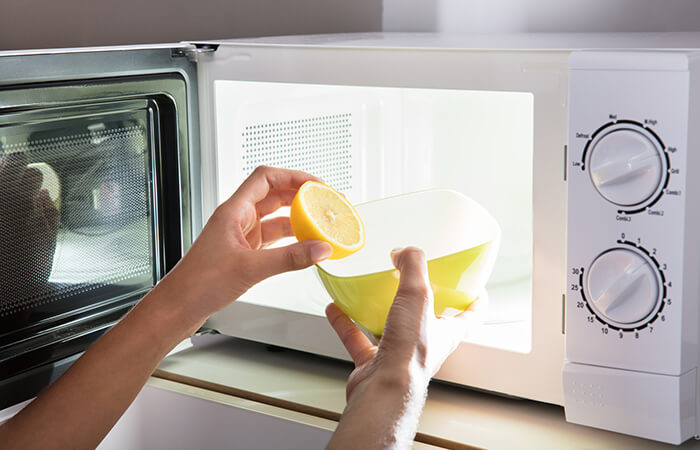

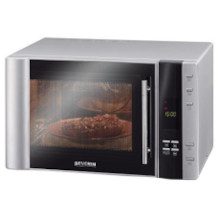


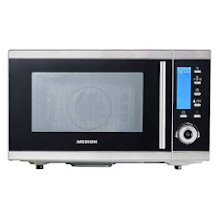

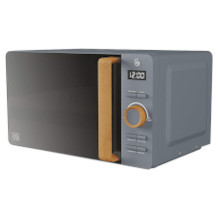

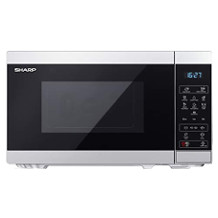


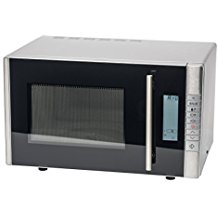
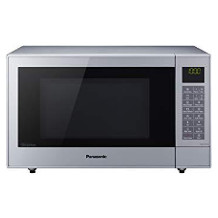
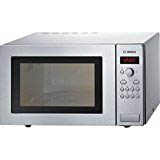
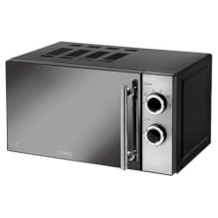

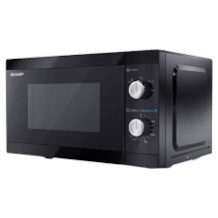


 2,322 reviews
2,322 reviews

